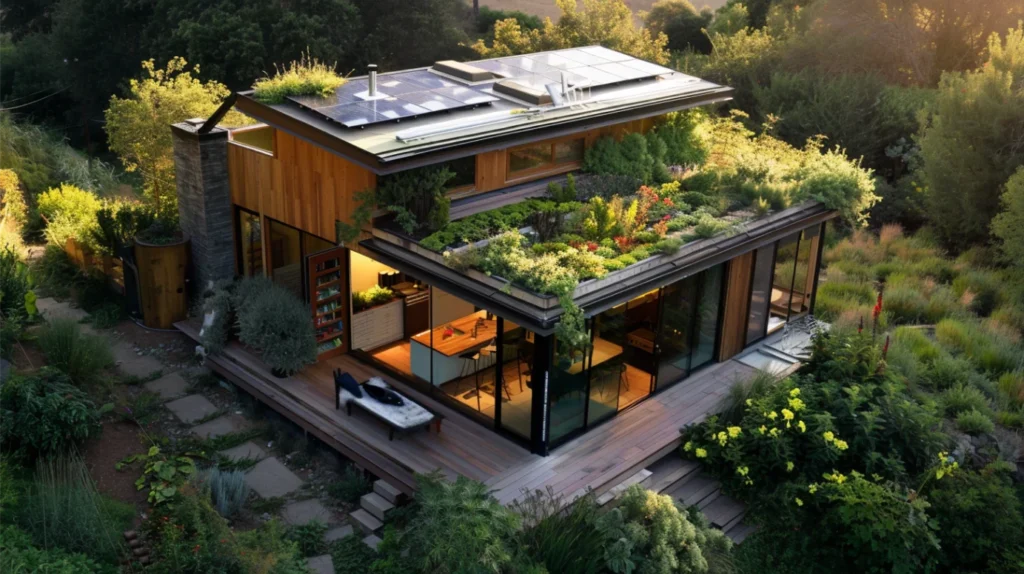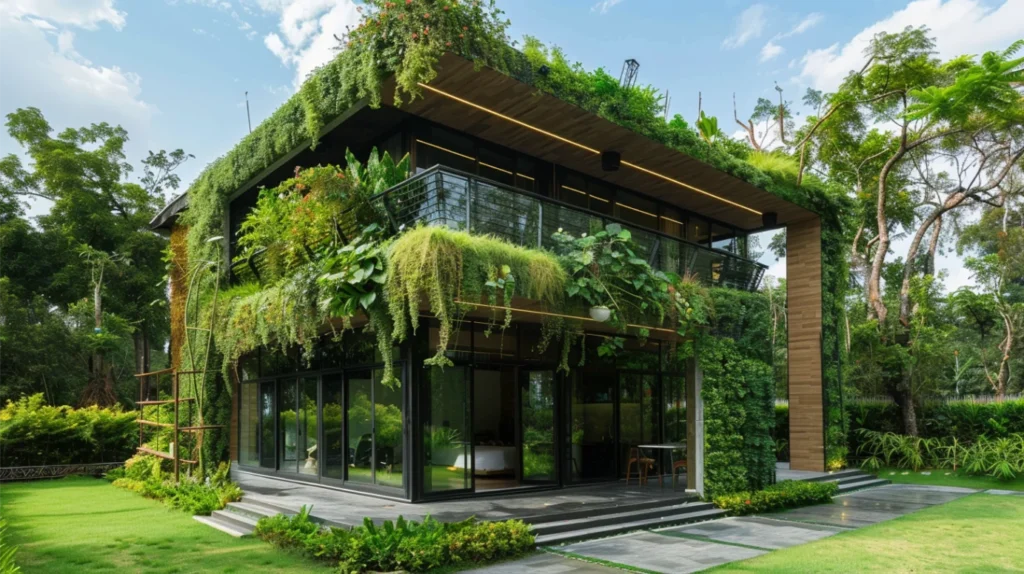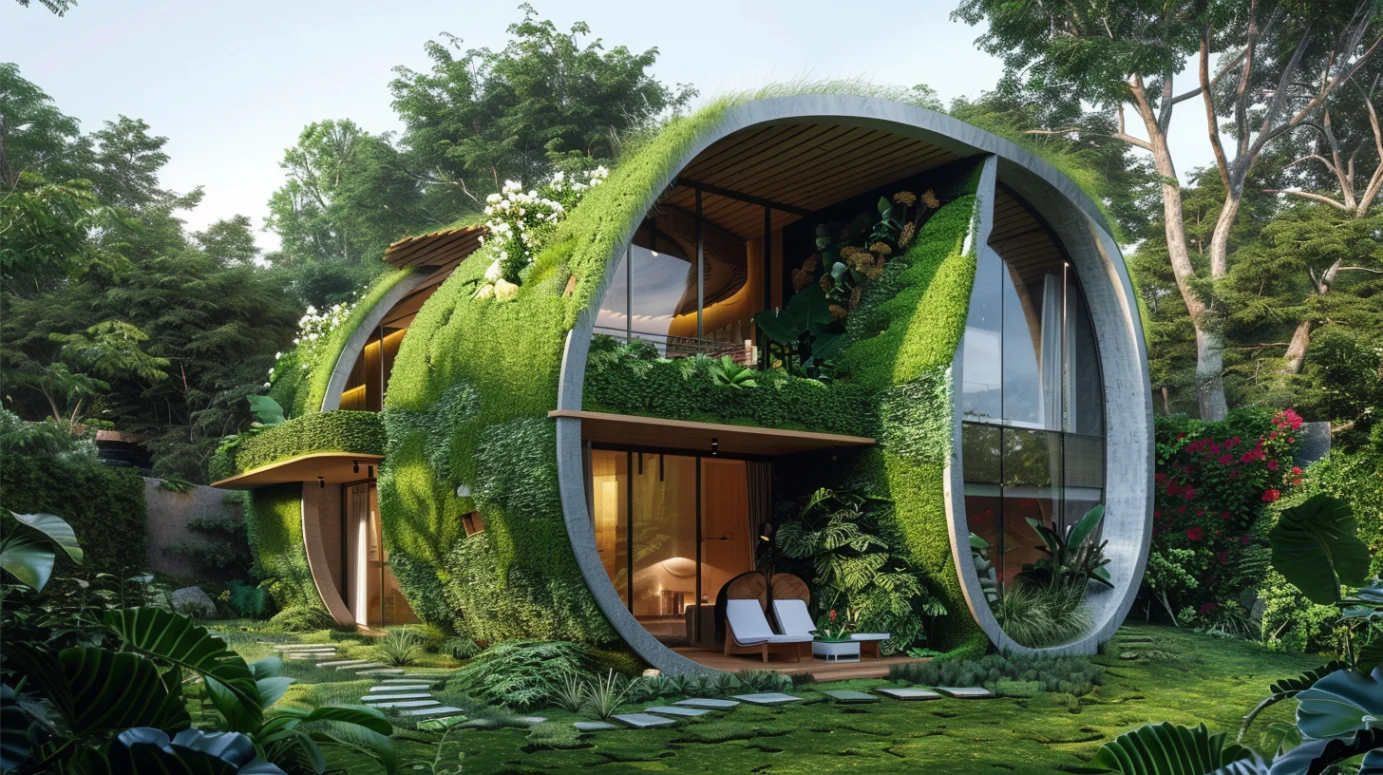In an era where environmental consciousness is more critical than ever, creating an eco-friendly home has become a top priority for many. But where do you start? How can you make a meaningful impact without completely overhauling your lifestyle? This guide will walk you through simple yet effective steps to sustainable living, helping you create a home that’s not only kind to the planet but also to your wallet.
Understanding the Importance of an Eco-Friendly Home
Before we dive into the practical steps, let’s take a moment to understand why creating an eco-friendly home matters.
- Environmental Impact: Our homes contribute significantly to our carbon footprint. From energy consumption to waste production, every aspect of our daily lives at home affects the environment.
- Health Benefits: Eco-friendly practices often lead to a healthier living environment, reducing exposure to harmful chemicals and improving indoor air quality.
- Cost Savings: Many sustainable practices, while potentially requiring an initial investment, can lead to substantial savings in the long run.
- Setting an Example: By adopting eco-friendly habits, we inspire others in our community to do the same, creating a ripple effect of positive change.
Now that we’ve established the importance, let’s explore how you can transform your home into an eco-friendly sanctuary.
Garden and Home Hacks presents a comprehensive guide to transforming your living space into an eco-friendly haven.
Energy Efficiency: The Foundation of an Eco-Friendly Home

One of the most impactful ways to make your home more sustainable is by improving its energy efficiency. Here’s how:
1. Upgrade to Energy-Efficient Appliances
Replace old, energy-hungry appliances with modern, energy-efficient models. Look for appliances with the ENERGY STAR label, which consume 10-50% less energy than standard models.
- Refrigerators: Choose models with the freezer on top or bottom for maximum efficiency.
- Washing Machines: Front-loading machines typically use less water and energy.
- Dishwashers: Modern, efficient models can save both water and electricity.
2. Switch to LED Lighting
LED bulbs use up to 75% less energy than incandescent bulbs and last much longer. While they may cost more upfront, the long-term savings are substantial.
Pro tip: Consider smart LED bulbs that can be controlled via your smartphone, allowing you to easily turn off lights when not in use, even when you’re away from home.
3. Improve Insulation
Proper insulation is crucial for maintaining your home’s temperature efficiently. Focus on:
- Walls: Consider adding insulation to exterior walls.
- Attic: Ensure your attic is well-insulated to prevent heat loss in winter and heat gain in summer.
- Windows: Replace old, drafty windows with double-pane or triple-pane models for better insulation.
4. Install a Programmable Thermostat
A programmable thermostat allows you to automatically adjust your home’s temperature based on your schedule. This can lead to significant energy savings without sacrificing comfort.
Water Conservation: Every Drop Counts

Water is a precious resource, and conserving it is crucial for sustainable living. Here are some ways to reduce water consumption in your home:
1. Fix Leaks Promptly
A dripping faucet can waste gallons of water over time. Regularly check for leaks and fix them promptly.
2. Install Low-Flow Fixtures
- Showerheads: Low-flow models can reduce water usage by up to 60% without compromising water pressure.
- Faucet Aerators: These inexpensive devices mix air with water, reducing flow while maintaining pressure.
- Dual-Flush Toilets: These allow you to choose between a full flush for solid waste and a reduced flush for liquid waste.
3. Collect Rainwater
Install a rainwater collection system to gather water for gardening and other non-potable uses. This not only conserves water but also reduces your water bill.
4. Xeriscaping
Consider xeriscaping your garden – a landscaping method that reduces or eliminates the need for irrigation. Choose native, drought-resistant plants that thrive in your local climate.
Waste Reduction: Embracing the Three Rs

Reducing waste is a cornerstone of sustainable living. Let’s explore how you can implement the three Rs – Reduce, Reuse, Recycle – in your home:
1. Reduce
- Go Paperless: Opt for digital bills and statements to reduce paper waste.
- Avoid Single-Use Items: Replace disposable items with reusable alternatives, such as cloth napkins, reusable shopping bags, and refillable water bottles.
- Meal Planning: Plan your meals to reduce food waste and unnecessary purchases.
2. Reuse
- Upcycling: Get creative with repurposing items. Old jars can become storage containers, and worn-out clothes can be transformed into cleaning rags.
- Buy Second-Hand: Consider purchasing pre-owned furniture, appliances, and clothing when possible.
- Donate: Instead of throwing away items you no longer need, donate them to local charities or thrift stores.
3. Recycle
- Set Up a Recycling Station: Create a dedicated area in your home for sorting recyclables.
- Educate Yourself: Learn about your local recycling guidelines to ensure you’re recycling correctly.
- Compost: Start a compost bin for food scraps and yard waste. This reduces landfill waste and creates nutrient-rich soil for your garden.
Eco-Friendly Materials: Making Sustainable Choices
When it comes to home improvements or decorating, choosing eco-friendly materials can make a significant impact:
1. Sustainable Flooring Options
- Bamboo: Fast-growing and durable, bamboo is an excellent alternative to hardwood.
- Cork: Renewable and biodegradable, cork flooring is both comfortable and eco-friendly.
- Reclaimed Wood: Using reclaimed wood gives new life to old materials and adds character to your home.
2. Non-Toxic Paints
Choose low-VOC (Volatile Organic Compounds) or zero-VOC paints for your walls. These paints release fewer harmful chemicals into the air, improving indoor air quality.
3. Organic Textiles
When shopping for bedding, towels, or curtains, opt for organic materials like organic cotton, hemp, or linen. These are produced without harmful pesticides and are often more durable.
Green Cleaning: Keeping Your Home Clean and Eco-Friendly
Conventional cleaning products often contain harsh chemicals that can harm both the environment and your health. Here’s how to keep your home clean the eco-friendly way:
1. DIY Cleaning Solutions
Many effective cleaning solutions can be made with simple, natural ingredients:
- All-Purpose Cleaner: Mix equal parts water and white vinegar in a spray bottle.
- Glass Cleaner: Combine 2 cups of water, 1/2 cup of white vinegar, and 1/4 cup of rubbing alcohol.
- Scrub: Make a paste with baking soda and water for tough stains.
2. Microfiber Cloths
Invest in high-quality microfiber cloths. They’re reusable, effective at cleaning without chemicals, and can significantly reduce your paper towel usage.
3. Essential Oils
Add a few drops of your favorite essential oil to your homemade cleaning solutions for a natural, pleasant scent.
Energy Generation: Harnessing Nature’s Power
For those ready to take a bigger step towards sustainability, consider installing renewable energy systems:
1. Solar Panels
Solar energy is becoming increasingly accessible and affordable. While the initial investment can be significant, solar panels can dramatically reduce or even eliminate your electricity bills over time.
2. Wind Turbines
If you live in an area with consistent wind, a small wind turbine could be a viable option for generating electricity.
3. Geothermal Heat Pumps
These systems use the earth’s constant temperature to heat and cool your home efficiently, potentially reducing your energy consumption by up to 50%.
Creating an Eco-Friendly Garden
Your outdoor space plays a crucial role in your home’s overall eco-friendliness. Here’s how to create a sustainable garden:
1. Choose Native Plants
Native plants are adapted to your local climate, requiring less water and maintenance. They also provide essential habitats for local wildlife.
2. Practice Companion Planting
Grow complementary plants together to naturally deter pests and improve soil health, reducing the need for chemical pesticides and fertilizers.
3. Create a Wildlife-Friendly Space
- Install bird feeders and baths
- Plant flowers that attract pollinators like bees and butterflies
- Consider creating a small pond to support aquatic life
4. Start a Vegetable Garden
Growing your own food reduces your carbon footprint and provides you with fresh, organic produce.
Eco-Friendly Habits: Small Changes, Big Impact
Sustainable living isn’t just about the physical aspects of your home; it’s also about the habits you cultivate:
- Unplug Electronics: Many devices continue to draw power even when turned off. Unplug them or use power strips that can be easily switched off.
- Air-Dry Laundry: Use a clothesline or drying rack instead of a dryer when possible.
- Use Natural Light: Open curtains and blinds during the day to reduce the need for artificial lighting.
- Eat Less Meat: Consider incorporating more plant-based meals into your diet. Meat production has a significant environmental impact.
- Support Local: Buy locally produced goods to reduce transportation-related emissions and support your local economy.
The Road to a Sustainable Future
Creating an eco-friendly home is a journey, not a destination. It’s about making conscious choices every day that align with your values and contribute to a healthier planet. Remember, every small step counts. You don’t have to implement all these changes at once – start with what feels manageable and gradually incorporate more sustainable practices into your lifestyle.
As you embark on this journey, you’ll likely find that living sustainably not only benefits the environment but also enhances your quality of life. An eco-friendly home is often a healthier, more comfortable, and more cost-effective home.
We hope this guide has inspired you to take action towards creating a more sustainable living space. Remember, the power to make a difference is in your hands. By making your home eco-friendly, you’re not just improving your own living environment – you’re contributing to a global movement towards a more sustainable future.

